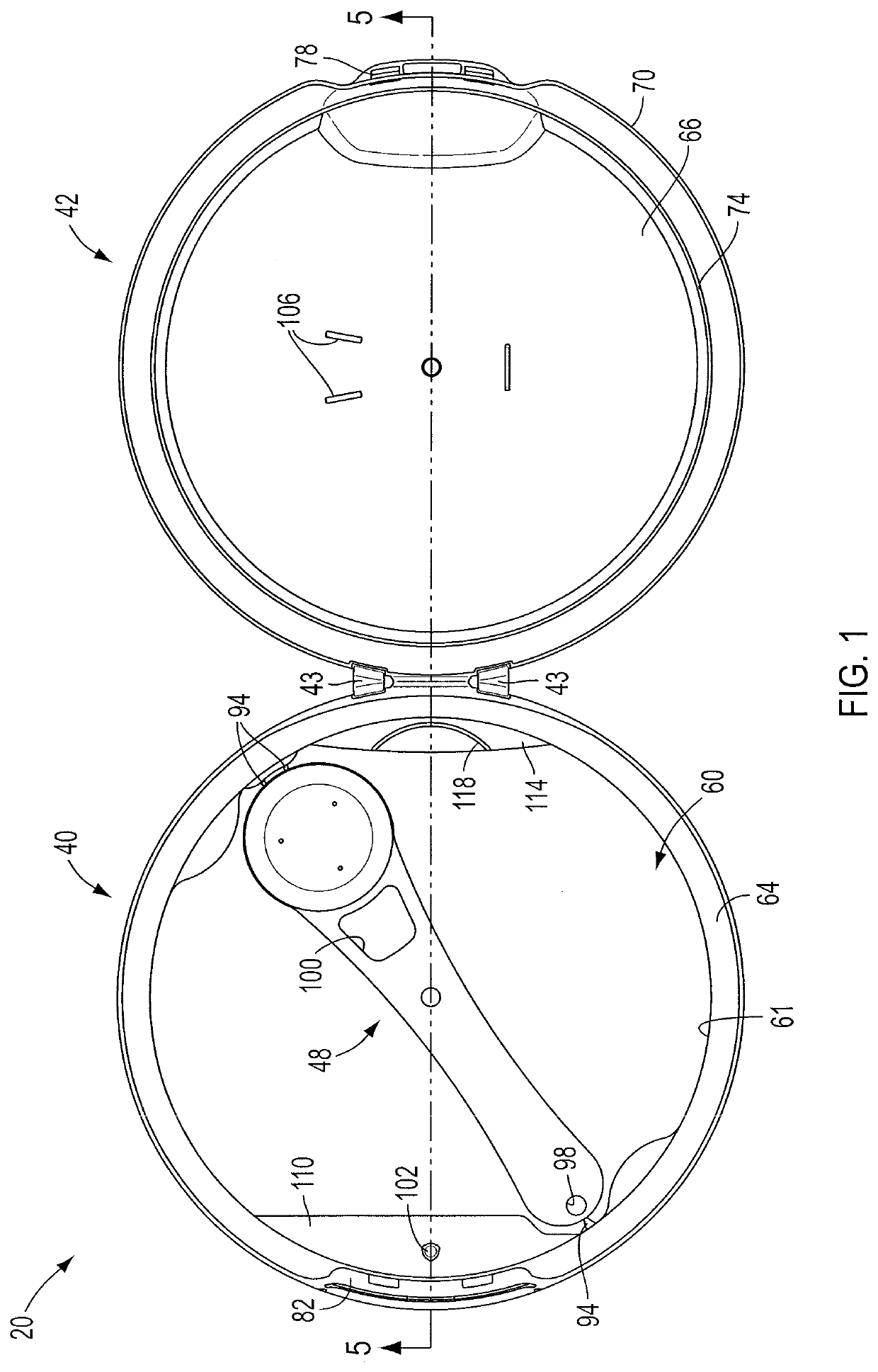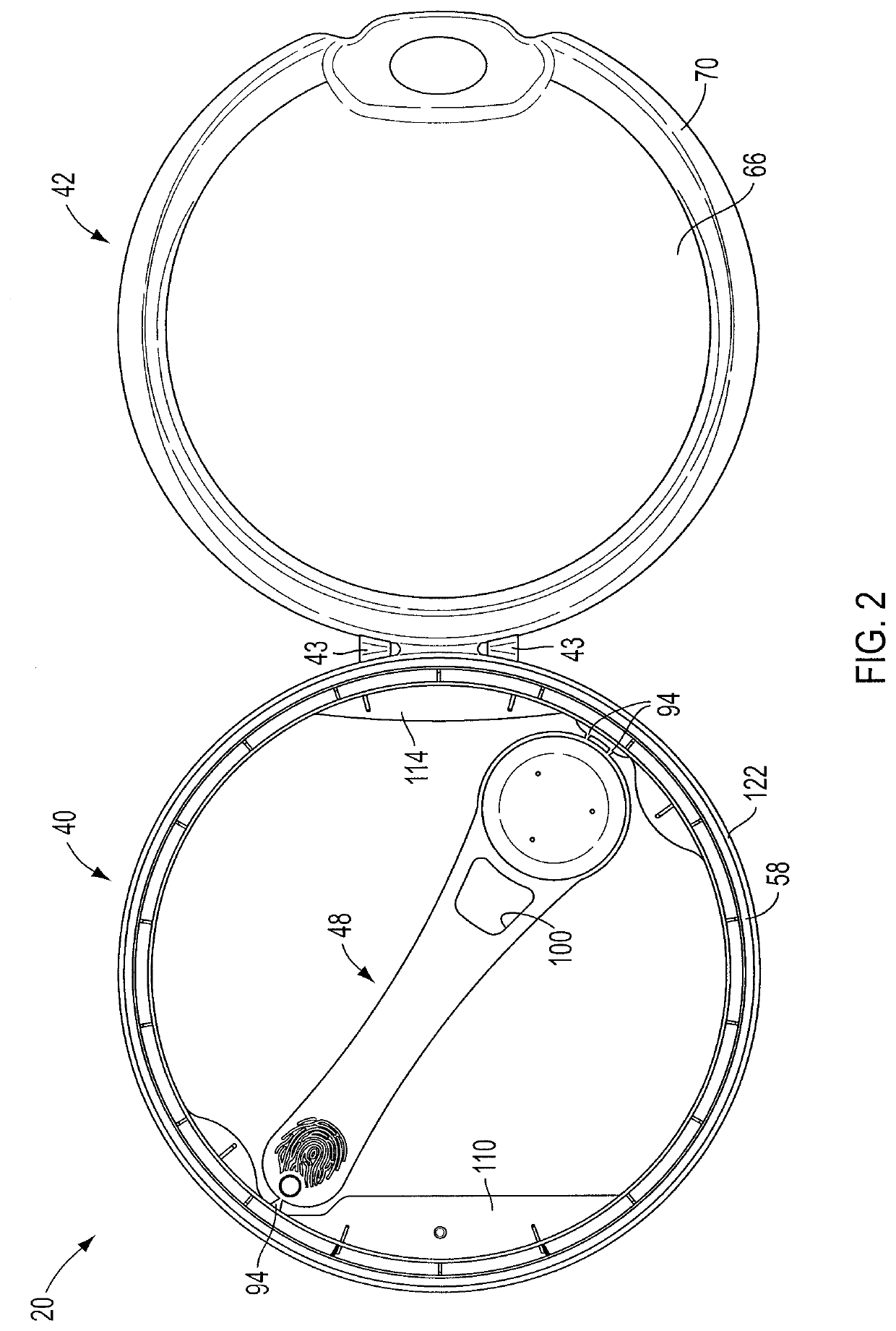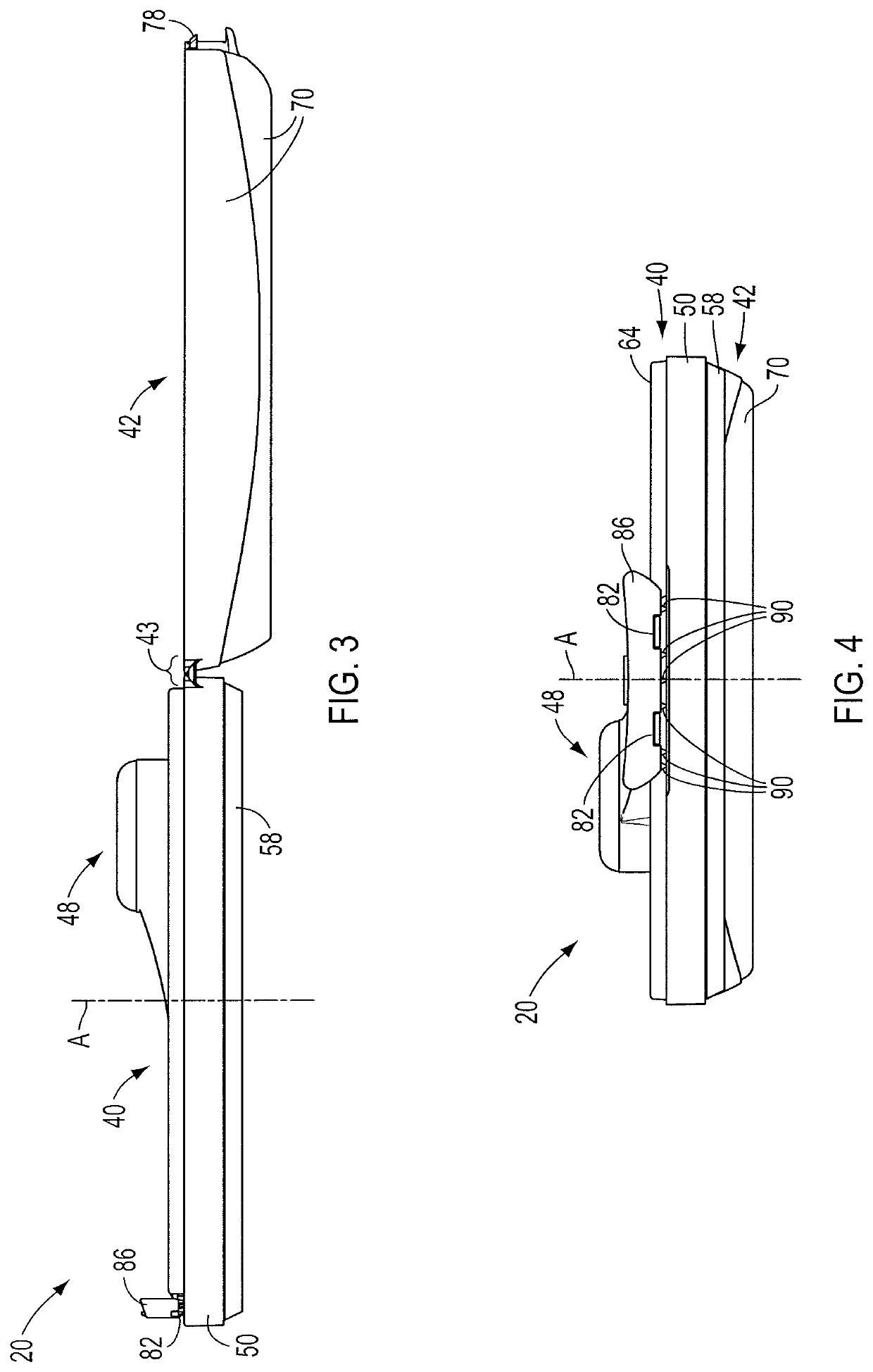Closure for a container with improved retention features
- Summary
- Abstract
- Description
- Claims
- Application Information
AI Technical Summary
Benefits of technology
Problems solved by technology
Method used
Image
Examples
first embodiment
[0055]In the first embodiment illustrated in FIGS. 1-8, the closure 20 is initially molded as a separate article that is subsequently attached to the container 22 after the container 22 has been filled with a product. With reference to FIGS. 6 and 8, the closure base 40 has a depending, peripheral, outer skirt 50 defining an exterior surface 52 and an interior surface 53, and a lower end portion 54 connected to an annular, flexible retention member 58. The flexible retention member 58 is movable (e.g., bendable, deformable (plastically or elastically), rotatable, etc.) about a connection 62 with the lower end portion of the skirt 54 from (i) an initial, undeflected configuration (as illustrated in FIG. 3-6) prior to installation upon the container 22 to (ii) a deflected configuration rotated away from the initial, undeflected configuration (as illustrated in FIGS. 7 and 8). In its deflected configuration, the flexible retention member 58 confronts the flange 25 and the wall portion ...
third embodiment
[0082]the closure 20B differs from the first illustrated embodiment of the closure 20 in that the interior surface 53B includes a frustoconical reinforcement portion 200B for abutting, and limiting laterally outward movement of, the flexible retention member 58B when the flexible retention member 58B is located in its deflected configuration (subsequent to assembly upon a container 22). The frustoconical reinforcement portion 200B may extend around the entire circumference of the closure skirt 50B, or alternatively, it may take the form of multiple discontinuous frustoconical reinforcement portions 200B spaced apart around internal circumference of the closure skirt 50B. The frustoconical reinforcement portion or portions 200B function to help retain the closure 20B on the container by limiting or restricting the laterally outward movement of the deflected flexible retention member 58B about the connection 62B.
[0083]It will be readily apparent from the foregoing detailed description...
PUM
 Login to View More
Login to View More Abstract
Description
Claims
Application Information
 Login to View More
Login to View More - R&D
- Intellectual Property
- Life Sciences
- Materials
- Tech Scout
- Unparalleled Data Quality
- Higher Quality Content
- 60% Fewer Hallucinations
Browse by: Latest US Patents, China's latest patents, Technical Efficacy Thesaurus, Application Domain, Technology Topic, Popular Technical Reports.
© 2025 PatSnap. All rights reserved.Legal|Privacy policy|Modern Slavery Act Transparency Statement|Sitemap|About US| Contact US: help@patsnap.com



